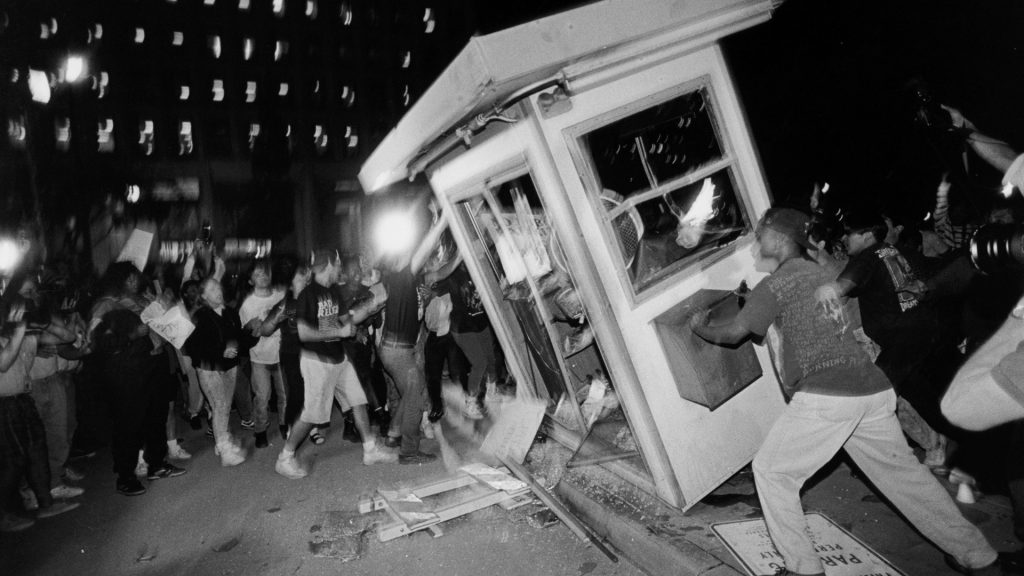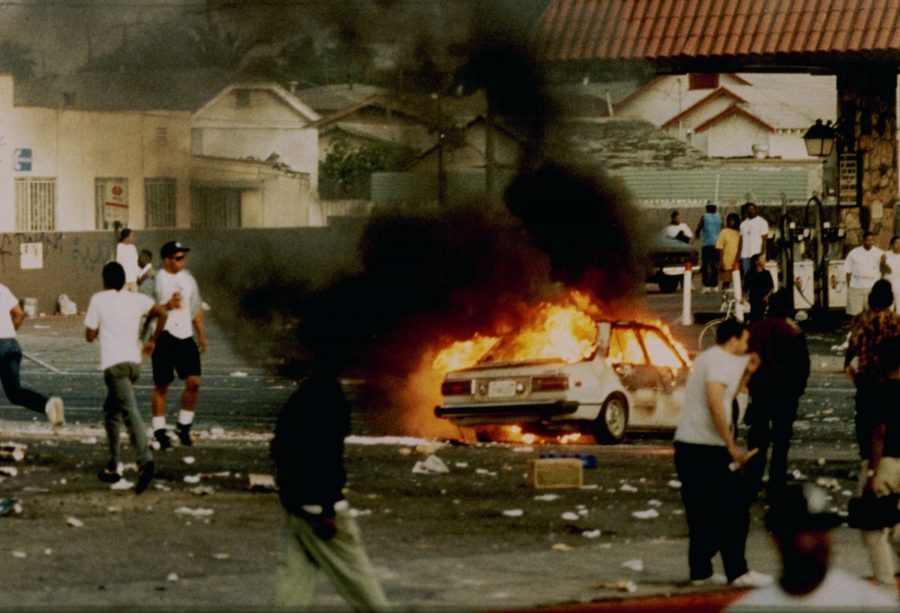Screenings:
Friday April 21, 5:30pm, Sunday April 23, 8:30pm
Tuesday April 25, 6:30pm, Thursday April 27, 3:45pm
at Cinépolis Chelsea
Section: Spotlight Documentary
April 29th marks 25 years since the verdict of the horribly dubbed ‘Rodney King trial,’ in which four Los Angeles police officers, all white men, were acquitted in the beating of unarmed Black motorist Rodney King, a beating fully captured on videotape, a beating in which the verdict should have been obvious, a verdict that we all waited with bated breath to be read.
If you were of age at the time, you know where you were when the acquittal went down. And whether you were in Oakland or Brooklyn, Miami or Chicago, you know some shit was about to go down. But none of those uproar can compare to those of where it all happened, and the exasperated Black citizens of the City of Angels lit that town up in fire and violence that some label a riot and others label an uprising. It was a tumultuous time, and the violence came out from ongoing fallout even prior through the Watts ‘riots,’ through ongoing police beatings and murders of Black men and women, and six months after a Korean convenience store owner convicted of fatally shooting African-American teenager Latasha Harlins was given zero jail time by a white Los Angeles judge.
But enough of my history lesson, you want to read about whether LA 92 is worth checking out. I have to tell you, there are more than a few things that make this new documentary difficult to watch.
None of these include the aesthetic qualities of the film. Directors Dan Lindsay and TJ Martin, of 2011’s inner-city football documentary, the Oscar winning Undefeated, know how to craft a film. They know how to build and drive emotions. Yet you may walk away from watching this film on this overwhelmingly polarizing topic wondering exactly what are their motivations, the motivations of their award-winning producers, as well as National Geographic Films’ own.

Much like The Reagan Show, another big Tribeca 2017 documentary, LA 92 uses strictly archival footage, including those of amateur handheld cameras (so much of which is fascinating to view), to craft their narrative. The images of “X” hats (popular because of Spike Lee’s then forthcoming Malcolm X biopic), Cross Colours gear, and mullets, bring you squarely into 1990’s culture, into those awakenings and blinders alike. Unlike Reagan, however, the multiple vantage points employed tend to deaden the filmmakers’ motivations. They intend subjectiveness, but the ‘riot’ scenes in particular, overwhelmingly graphic to anyone, has a criminalizing effect on the the viewer. This happens to the same viewer who would cheer for William Wallace fighting against injustice in Braveheart, but not for the Angelenos of all colors and creeds unable to contain their fury.
So is LA 92 intended to portray a time, landscape, and fervor that Americans still haven’t properly dealt with, emotionally or socially? It’s supposed to, though the Black Lives Matter movement, and other movements that have recently arisen, and existed in the past 25 years, already prove that.
But the ‘black suffering’ aesthetic still make this film problematic. It also makes it feel ethnographic. So is the ‘black suffering’ displayed in LA 92 also directly pedagogic? A film like this seems born to ask as many questions as it may answer for some.
BaL Festival Rating: 3/5
Director: Dan Lindsay, TJ Martin
Genre: Documentary
Country: USA
Runtime: 114 min.
The 2017 Tribeca Film Festival runs from April 19 – 30 in New York City

